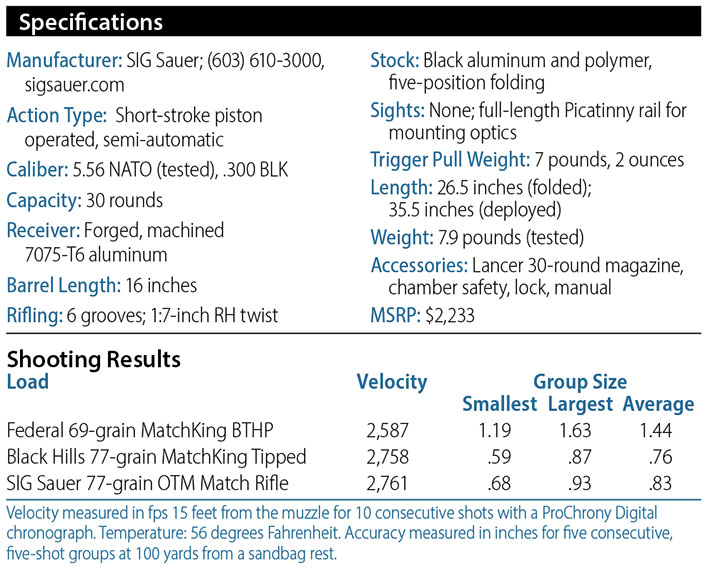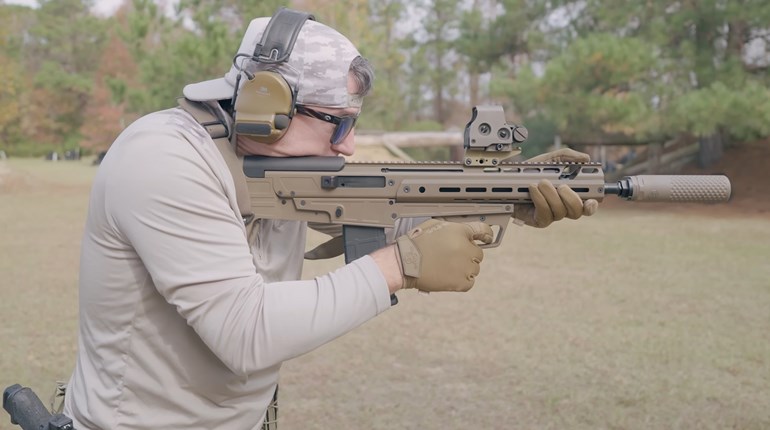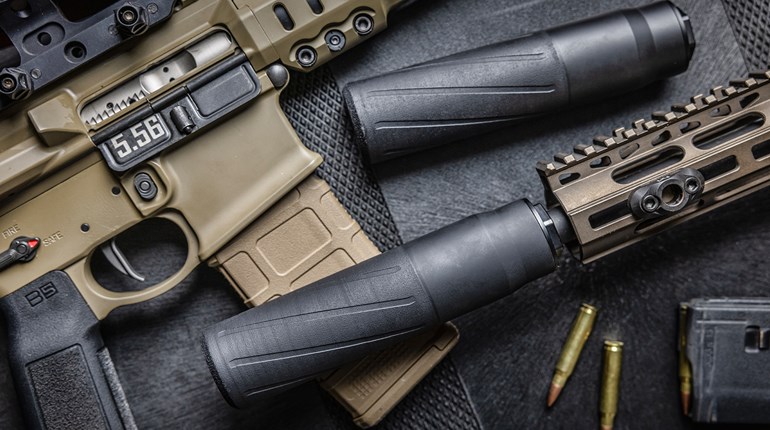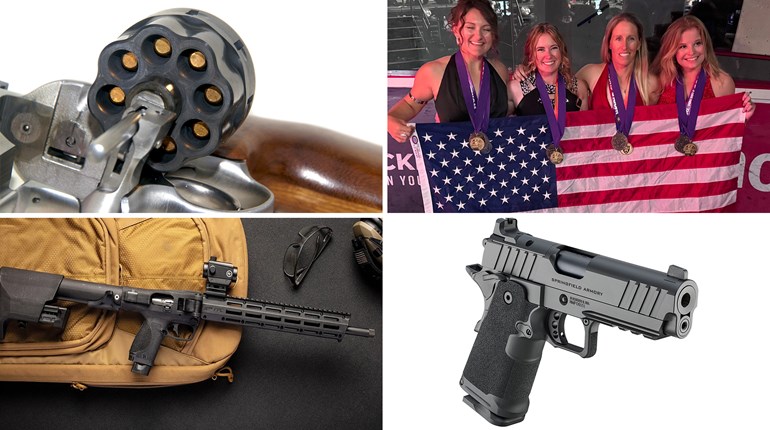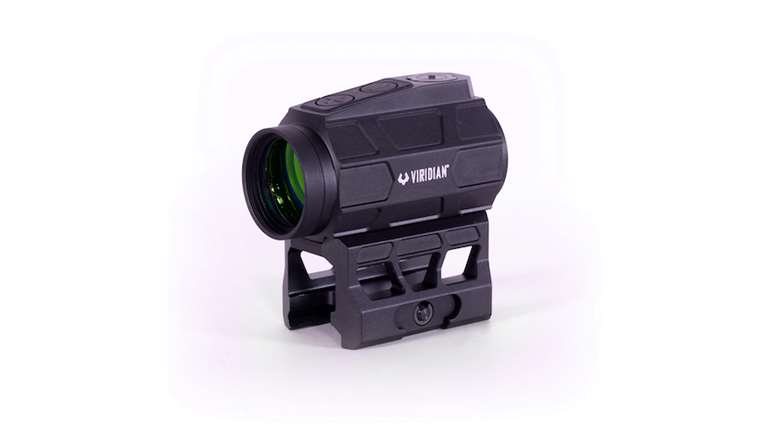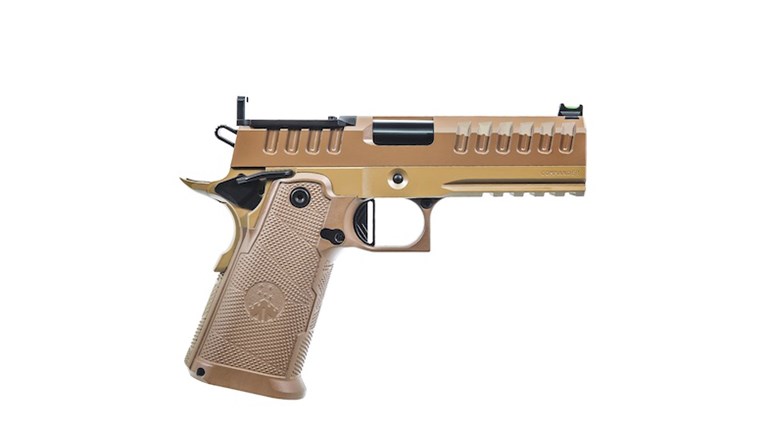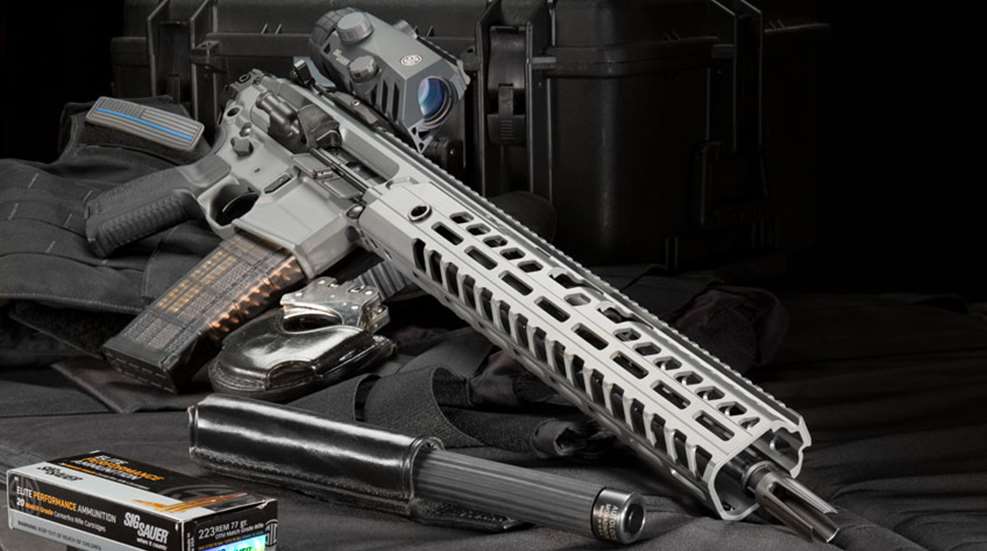
In Latin, the word refers to valor, manliness, courage and character, but the two words that may best describe the new SIG Sauer MCX Virtus rifle are excellence and worth.
Offered in both 5.56 NATO and .300 BLK, the Virtus may, at a quick glance, look like a variant of the AR-15, except it is different, a word which you will quickly realize is a huge understatement. The SIG MCX will probably come to mind, but, while the Virtus is based on the MCX, it is substantially more.
The first thing you might appreciate upon seeing the SIG Sauer MCX Virtus is it isn’t all black, at least in the commercial/law enforcement version called the Virtus Patrol. The Virtus Patrol, comes in Stealth Gray or Flat Dark Earth, at least as far as the receivers and handguards go. The rest of the rifle is black, and the two hues contrast nicely.

Our sample came in Stealth Gray and, as one who has asked for total grayness in tactical law enforcement gear for 40 years, this was a breath of fresh air. Then again, I was an urban cop, and Flat Dark Earth would be my choice for rural duty. Once you get beyond the color you’ll notice how much the Virtus looks like an AR-15. Get closer. Appearance is but skin deep. With more in-depth study, it looks pretty much like the only parts interchangeable with an AR-15 are the receiver pins, trigger group, extractor, ejector, flash hider and dustcover. Not even the pistol grip is interchangeable. Yes, this is a new rifle. Let’s go deeper.
Like the SIG Sauer MCX, its Virtus sibling is of short-stroke piston operation with an encapsulated dual-recoil-spring system that will remind “mature” readers of the AR-180 rifle. The bolt group appears to be semi-dependent in being suspended from the recoil-spring group while also contacting the receiver.
A number of Virtus components will interchange with the MCX, and the two rifles look much alike. Protected, ambidextrous controls are mostly the same, as are receiver curvatures, but there are dimensional differences, and the SIG Sauer MCX Virtus’ winter trigger guard is integral. Then there’s the bolt group.

Differing from the SIG MCX, virtually none of the components of the SIG Sauer MCX Virtus’ bolt group are interchangeable with it. The Virtus’ mainsprings are captive in their steel end caps and do not separate from the operating rod, so these parts are harder to lose. The op-rod carries a pivoting, spring-loaded, firing-pin lock, which the hammer cams out of the way just before striking the firing pin. This makes it impossible for the firing pin to move forward if the Virtus were dropped. The firing pin has a return spring and even the bolt and charging handle differ from the MCX, but the Virtus’ bolt group operates with glass-like smoothness.
With the handguard removed, the gas-block components are identical to those of the MCX. There are two positions: One for use with a suppressor, and one for use without.
The magazine-release button is longer top to bottom, but the hardened-steel implant on the left side of the receiver has been maintained to prevent the cam pin from contacting the inside of the alloy receiver.

SIG’s standard Virtus/MCX folding stock folds to the left, allowing the SIG Sauer MCX Virtus to be fired in the folded position, if necessary. However, the Virtus’ bolt will not remain locked to the rear when this stock is folded. SIG’s lightweight, thin, folding buttstock or its collapsible variant can replace the standard folder. Additionally, SIG offers an adapter to allow a standard M4 fixed tube to be used in conjunction with any standard sliding stock.
I once asked a SIG employee what MCX stood for. He said, “think of it as Modular Carbine X-tra.” The SIG Virtus has features that one would not find in some custom AR platforms that cost twice as much.
There are also the standard steel implants in the rear of the receiver to lock the charging handle, and the forward assist and case deflector are now modular for ease of production. Another such component going the extra mile is the set of approach ramps to the feed ramps of the barrel extension. Normally, part of the alloy lower receiver, those of the SIG Sauer MCX Virtus are part of a hardened-steel implant bolted to the upper receiver and mating with those of the barrel extension. All of these components are black and contrast with the Stealth Gray finish on the alloy.
On both sides and the bottom of the handguard are eight M-Lok slots for mounting accessories, and three QD-sling mounts are found on both sides of the rifle along with a web sling slot in the buttstock. On either side of the handguard at the gas block are large openings to access the two-position gas adjustment.
Disassembly is mostly identical to the MCX and somewhat similar to the AR-15, but read the instructions. Also, the chamber block will be handy to move the fairly tight receiver pins. With the rifle empty and the selector on “safe,” both main receiver pins are pushed to the right using the furnished orange chamber block. With the upper-receiver component removed, the upper handguard can then be pulled forward and removed. Our sample was fairly tight, but this makes for an excellent base for mounting accessories, and the handguard is so well fitted that one has to look twice to see where it separates.
With the upper handguard removed, the gas block is disassembled by depressing the spring-loaded stop and rotating the gas plug until it can be pulled out, followed by the piston. When the gas plug is replaced, be sure to reset it for either suppressed or standard, as needed.

To remove the bolt group on the SIG Sauer MCX Virtus, pull back the charging handle part-way and then grasp and remove the bolt group. Having a receptacle for small parts, push the firing pin retaining pin from left to right until it stops. Then remove the firing pin from the rear. Now, rotate the bolt-cam pin 45 degrees and lift it out of the bolt, and remove the bolt from the front of the bolt carrier.
The commercial version of the Virtus is offered in three versions and two chamberings. Our sample is the rifle with a 16-inch barrel, however, SIG Sauer also offers the short-barreled-rifle (SBR) Virtus with an 11.5-inch barrel and finally a pistol variant with a 9-inch barrel. A military variant is the Virtus Rattler with a 5-inch barrel that is also offered in 5.56 NATO and .300 BLK.
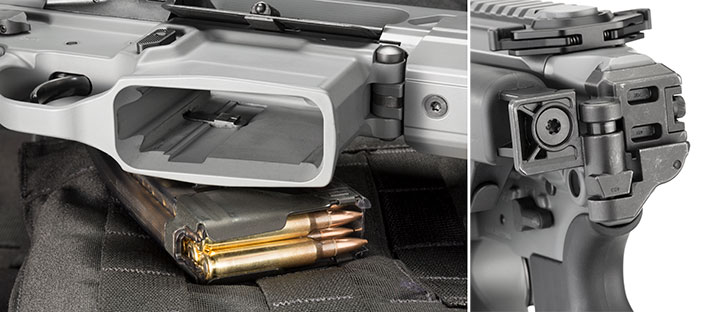
My sample SIG Sauer MCX Virtus Patrol is the full-length version with a 16-inch barrel, and SIG also sent along its 1-6x24 mm TANGO6 tactical riflescope.
Eight reticles are offered, Horseshoe Dots for 5.56/7.62 NATO or .300 BLK, and six other reticles for 5.56/7.62 NATO. All reticles are illuminated by a common CR2032 battery with 10 power settings. The 1-6x24 mm TANGO6 has .5-MOA clicks. All three turrets are waterproof and have total adjustment and locking features, and they come with an unlimited lifetime guarantee. With the SIG TANGO6 Scope came a set of SIG’s 30 mm rings.
In Latin, the word refers to valor, manliness, courage and character, but the two words that may best describe the new SIG Virtus rifle are excellence and worth.
Shooting the SIG Sauer MCX Virtus was quite pleasant. I’d fired the MCX in both chamberings, but they were SBR’s, so there was some difference. The trigger pull was just a little over 5 pounds while another measured slightly more than 7 pounds. However, both had very little take-up and were crisp, with a positive reset.
Ammunition used consisted of SIG Elite Performance .223 Rem. 77-grain OTM Match, Black Hills 77-grain and Federal 69-grain MatchKing BTHP. M193 55-grain G.I. ball was used for initial sight-in and as a control. It was no surprise that it produced 100-yard groups in the 1.5- to 2-inch range. From the bench, however, the other three brands produced excellent accuracy as recorded. While a 20-round magazine was used during accuracy testing, the SIG-issued Lancer 30-round magazine was used for all off-hand, informal shooting and performed perfectly, as did the Virtus and SIG’s TANGO6 optic.
For close to medium range, DI Optical’s DCL 30 red-dot sight and DCL3X Extender worked well, especially with the latter mounted in the A.R.M.S. #78 Tactical Integrated Tilt System, which instantly locks the extender out or deploys it.
I once asked a SIG employee what MCX stood for. He said, “think of it as Modular Carbine X-tra.” The SIG Sauer MCX Virtus has features that one would not find in some custom AR platforms that cost twice as much. Whether or not you want or need a rifle of this stature will be up to you, but it seems surprisingly affordable for what it brings to the table. Excellence? Worth, X-tra? I’d say so, and from one of world’s foremost producers of fine firearms.

